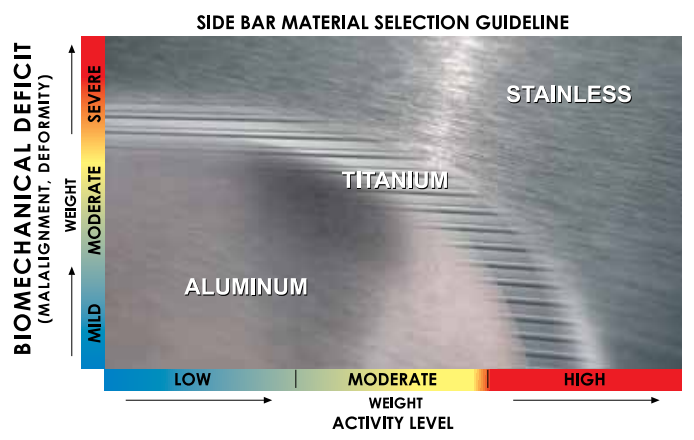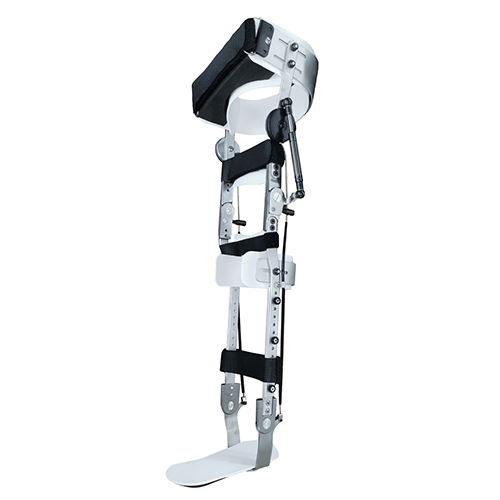9007
PreStride®
The PreStride® is an evaluation tool that may be used in combination with a physical examination to assess candidacy for Stride stance control orthotic management. The PreStride® is a modular and fully adjustable stance control KAFO that may be fitted to most adults who are between 5'2" and 6'2" in height. The overall height of the orthosis is easily adjusted by releasing the spring loaded knobs located on the medial and lateral uprights. Calf and thigh bands are also easily adjusted for varying A-P depths. The PreStride®, Model 9007, comes with FullStride® stance control knee joints and an optional GX-Assist unit to accommodate individuals with significant weakness of hip musculature. The GX-Assist uses a pneumatic spring to assist in knee extension by mimicking the swing phase function of the quadriceps muscle group. Model 9007 also offers interchangeability with the SafetyStride® stance control knee joint (sold separately), which has the ability of resisting knee flexion at any angle and does not require full 180° knee extension in order to lock. An additional advantage of the PreStride® is that it may be used as an effective gait training tool during rehabilitation.
For more and information please visit our product spotlight page.
Knee Joint Selection Guide
Discretion in choosing a joint size and designing an appropriate orthosis should be used by the orthotist in all cases. We would reference and support the approach described by Lunsford and agree that successful orthotic management requires a clear understanding of the condition being treated and a realistic plan to address the biomechanical deficits presented.
For optimal orthotic management, the mechicanical demands to be placed upon the orthosis for any given treatment must be understood prior to material selection.
The selection of the correct materials is often the difference between success and failure and we believe that the orthotist is trained and the best qualified to match the characteristics of the material to the biomechanical and functional needs of the patient.
Discretion in choosing a joint size, selecting the Side Bar Material, and designing an appropriate orthosis should be used by the orthotist in all cases. The following factors are commonly used by orthotists to help determine the level of Biomechanical Deficit. Practical issues including compliance, occupation, environment and social factors should also be taken into consideration.
Biomechanical Deficit Factors
- Single or multiple plane involvement
- Single or multiple segment involvement
- Muscle strength/weakness
- Range-of-motion
- Skeletal and/or joint alignment — malalignment
- Mobile or fixed deformity
- Presence and magnitude of joint contracture
- Presence/extent of spasticity
- Proprioceptive and cognitive skills
- Progressive or non progressive condition
Steel and Aluminum Alloys
Steel is stronger and stiffer than aluminum allow; aluminum allow has a lower density making it lighter. Steel is fatigure resistant and combines high rigidity, or ductility depending on the alloy. The main disadvantage of steel is its weight. The major benefit of aluminum in orthotics is its high strength to weight ratio. Aluminum does however have a lower endurance limit under repreated dynamic loading conditions than does steel. A common clinical question relates to the upright of a lower extremity orthosis in which deformation under bending stresses is very important. In general terms, if loading conditions are known to be great or highly repetitive, steel is superior to aluminum.
Considerations for preventing failure:
- Fatigue
- Stress Concentration
- Finishing
- Bend Radii
- Design



 Downloadable Version
Downloadable Version